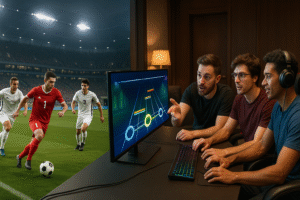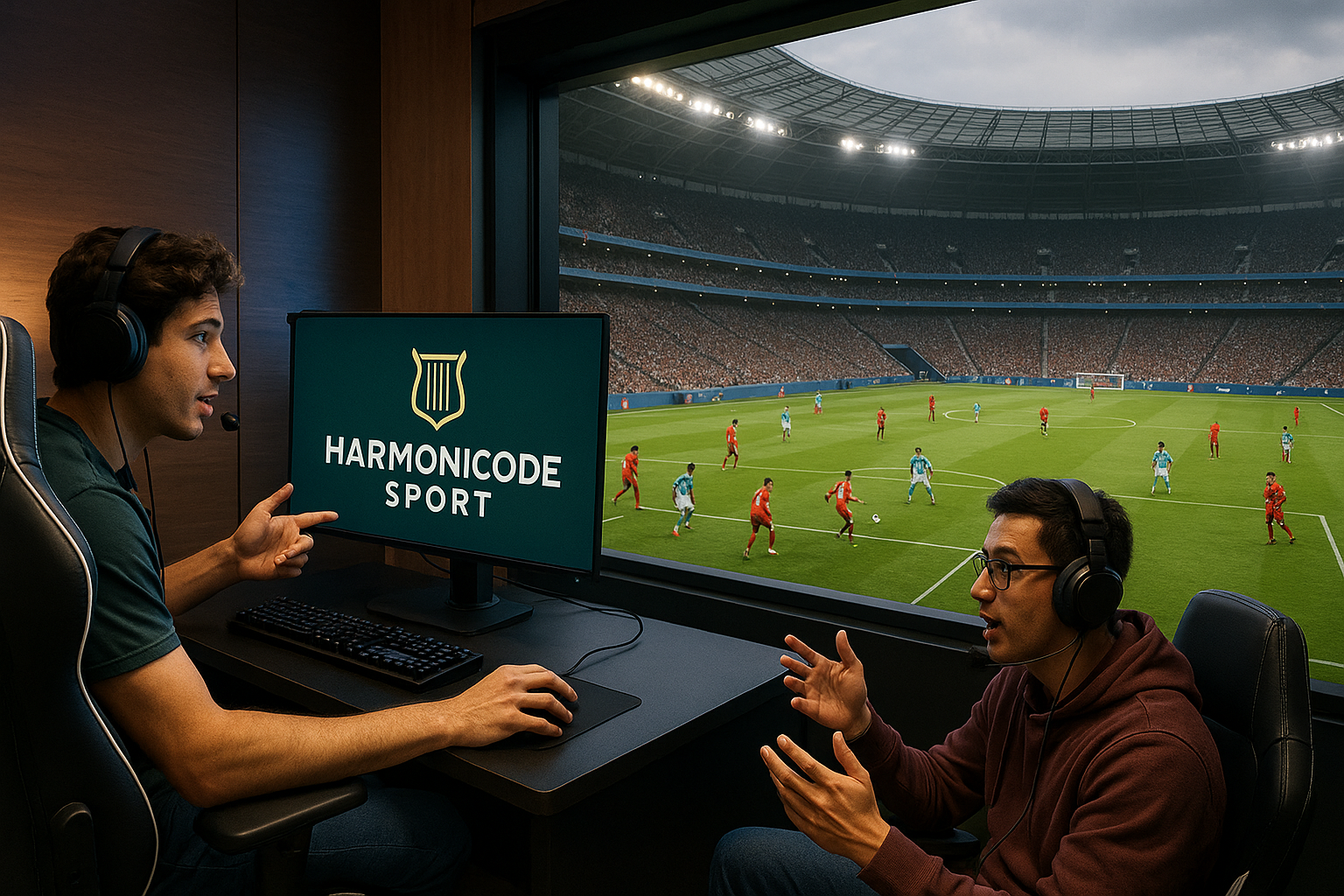In the competitive world of sports, achieving peak performance requires a blend of technique, physical conditioning, and mental fortitude. As the sports industry continues to evolve, training and performance enhancement innovations are at the forefront of helping athletes push their limits. One such groundbreaking concept is Harmonicode Sport—a unique and cutting-edge approach that integrates rhythm, biomechanics, and innovative technology to revolutionise athletic performance.
This article explores the science behind Harmonicode Sport, its benefits, real-world applications across various sports, and how it shapes the future of sports performance.
What is Harmonicode Sport?
Defining Harmonicode Sport
At its core, Harmonicode Sport refers to integrating rhythmic patterns, biomechanics, and advanced technology to improve athletic performance. The term “Harmonicode” is a fusion of two concepts:
-
Harmony: In this context, harmony refers to the synchronised relationship between the body, mind, and environment in which the athlete operates. Just as an orchestra relies on each instrument being in tune to create a harmonious piece, an athlete’s body must move perfectly with their internal rhythms and external stimuli.
-
Code: This refers to modern technology, including data analytics, AI, motion tracking, and neurofeedback, to decode the body’s movements, identify performance patterns, and optimise training. Harmonicode Sport seeks to merge the biological (human) aspect of sports with the technological (data-driven) component, creating a holistic approach to performance.
The Intersection of Rhythm and Technology
Harmonicode Sport is based on the understanding that the human body functions with its own set of natural rhythms. These rhythms, whether it’s the timing of a runner’s stride or the coordination of a swimmer’s strokes, can be enhanced through rhythmic training. By incorporating external rhythmic stimuli, such as music or beats, athletes can synchronise their movements with precise timing, improving coordination, energy efficiency, and performance.
Advanced technologies such as wearable sensors, motion capture systems, and real-time data analytics provide athletes and coaches with valuable insights into biomechanics, ensuring that every movement is optimised for peak efficiency. These tools track everything from stride frequency and muscle engagement to heart rate variability, allowing for data-driven decisions on training loads and recovery strategies.
The Science Behind Harmonicode Sport

Biomechanics and Rhythmic Synchronisation
At the heart of Harmonicode Sport lies a deep understanding of biomechanics: studying how the body moves. Rhythmic synchronisation is crucial in this approach, as it enables athletes to move with greater efficiency, fluidity, and power.
Every sport involves repetitive movements that, when performed incorrectly, can lead to injury or suboptimal performance. For example, a runner’s stride may become uneven due to poor posture or incorrect foot placement, leading to fatigue or injury. By introducing rhythmic cues—such as specific musical beats or visual patterns—athletes can align their movements with a more natural and effective rhythm, improving form and reducing stress on the body.
Furthermore, rhythmic training has improved the body’s motor control—the ability to control movement and coordination. This enhanced motor control translates into faster reaction times, better decision-making, and the ability to maintain peak performance under pressure.
Neurofeedback and Mental Performance
In addition to physical synchronisation, Harmonicode Sport also focuses on optimising mental performance. Neurofeedback, a technique that monitors and trains brain activity, plays a significant role in this approach. Using real-time brainwave data, athletes can learn how to enter the “flow state,” a mental state characterised by deep focus and peak performance.
Flow states are essential in high-performance sports, where athletes need to be in a state of heightened awareness without being distracted by anxiety or external factors. By aligning brain activity with rhythmic training and using biofeedback tools, athletes can better control their emotions, enhance focus, and perform at their highest potential even in the most challenging situations.
Benefits of Harmonicode Sport
1. Injury Prevention and Recovery
One of Harmonicode Sport’s most significant advantages is its ability to prevent injuries and accelerate recovery. Wearable sensors and motion-tracking technology detect subtle movement imbalances that could lead to overuse injuries.
For instance, if a runner’s stride is slightly off, the system can alert them to adjust their form to avoid unnecessary strain on their muscles and joints. Early detection and correction of these imbalances significantly reduce the risk of strains, sprains, and stress fractures.
Additionally, rhythmic training is beneficial during the rehabilitation process. After an injury, athletes can use rhythmic exercises to retrain muscles, restore proper movement patterns, and regain full strength and mobility. This rehabilitation approach speeds up the recovery process and helps athletes return to their sport with reduced risk of reinjury.
2. Enhanced Performance
Harmonicode Sport isn’t just about injury prevention; it’s also about maximising performance. By fine-tuning movement patterns, athletes can move more efficiently and generate greater power. For example, a sprinter can adjust their stride length and cadence based on real-time feedback to shave crucial milliseconds off their time.
Moreover, incorporating rhythm into training helps athletes develop better timing and coordination. In team sports like soccer or basketball, synchronised movements can enhance team dynamics, making executing complex plays and strategies easier. The ability to maintain this coordination under pressure is often the difference between winning and losing in fast-paced, high-stakes situations.
3. Mental Clarity and Focus
The mental aspect of sports is just as crucial as the physical side. Harmonicode Sport helps athletes enhance their mental clarity and focus by using neurofeedback and rhythmic training to optimise brain function. Through continuous monitoring of brainwave activity, athletes can be trained to remain calm and focused during stressful moments in competition.
By incorporating rhythmic music or visual cues, athletes can also engage in meditative practices that improve relaxation and recovery, reduce anxiety, and enhance performance in high-pressure situations.
4. Personalised Training
Another powerful feature of Harmonicode Sport is its ability to deliver personalised training programs. By analysing data from wearables, motion sensors, and biometric feedback, the system tailors exercises and routines to meet each athlete’s unique needs. This personalised approach ensures that training focuses on the athlete’s strengths and weaknesses, improving efficiency and effectiveness.
Whether it’s adjusting the training intensity or suggesting new techniques to improve form, the data-driven nature of Harmonicode Sport ensures that each athlete gets the most out of their training sessions.
Applications of Harmonicode Sport Across Different Sports
Football (Soccer)
In soccer, timing and positioning are everything. Harmonicode Sport can optimise players’ movements during set pieces, such as free and corner kicks, by analysing player spacing, timing, and movement coordination. The system can also improve goalkeepers’ reflexes and reaction time, enabling them to anticipate the ball’s trajectory more accurately.
Track and Field
Harmonicode Sport can adjust a runner’s start block angle, stride frequency, and foot placement in track events like sprints to maximise speed and efficiency. The system can also monitor heart rate and fatigue levels, ensuring that athletes don’t overtrain or reach a point of exhaustion during long-distance events.
Esports
Esports players require cognitive agility, quick reflexes, and sustained mental focus during long gaming sessions. Harmonicode Sport’s rhythm-based training and neurofeedback techniques can enhance mental clarity, reduce stress, and optimize reaction time, giving players a competitive advantage in digital arenas.
Rehabilitation
For injured athletes, rhythmic rehabilitation exercises promote controlled movement patterns and restore muscle coordination. These exercises are based on the same principles as Harmonicode Sport’s training methods, ensuring a smooth transition from recovery to full performance.
The Future of Harmonicode Sport
-
Innovative Training Apparel: Clothing embedded with sensors to monitor movement and provide feedback in real-time.
-
Virtual Reality (VR) Simulations: Using VR headsets to simulate game scenarios and practice skills with rhythmic cues.
-
AI-Powered Personal Coaches: Virtual coaches that guide athletes through personalised training sessions based on real-time performance data.
These innovations will make Harmonicode Sport even more integral to professional and amateur athletic development, democratizing access to elite-level training and performance optimisation.
Conclusion
Harmonicode Sport is a revolutionary approach that blends rhythm, biomechanics, and technology to enhance every aspect of athletic performance. By improving coordination, preventing injuries, boosting mental focus, and providing personalised training, Harmonicode Sport is changing the way athletes train and perform.
With its potential to transform sports at all levels—from grassroots to elite professional athletes—Harmonicode Sport is poised to become a cornerstone of athletic performance’s future.

[…] Also Read: Harmonicode Sport […]